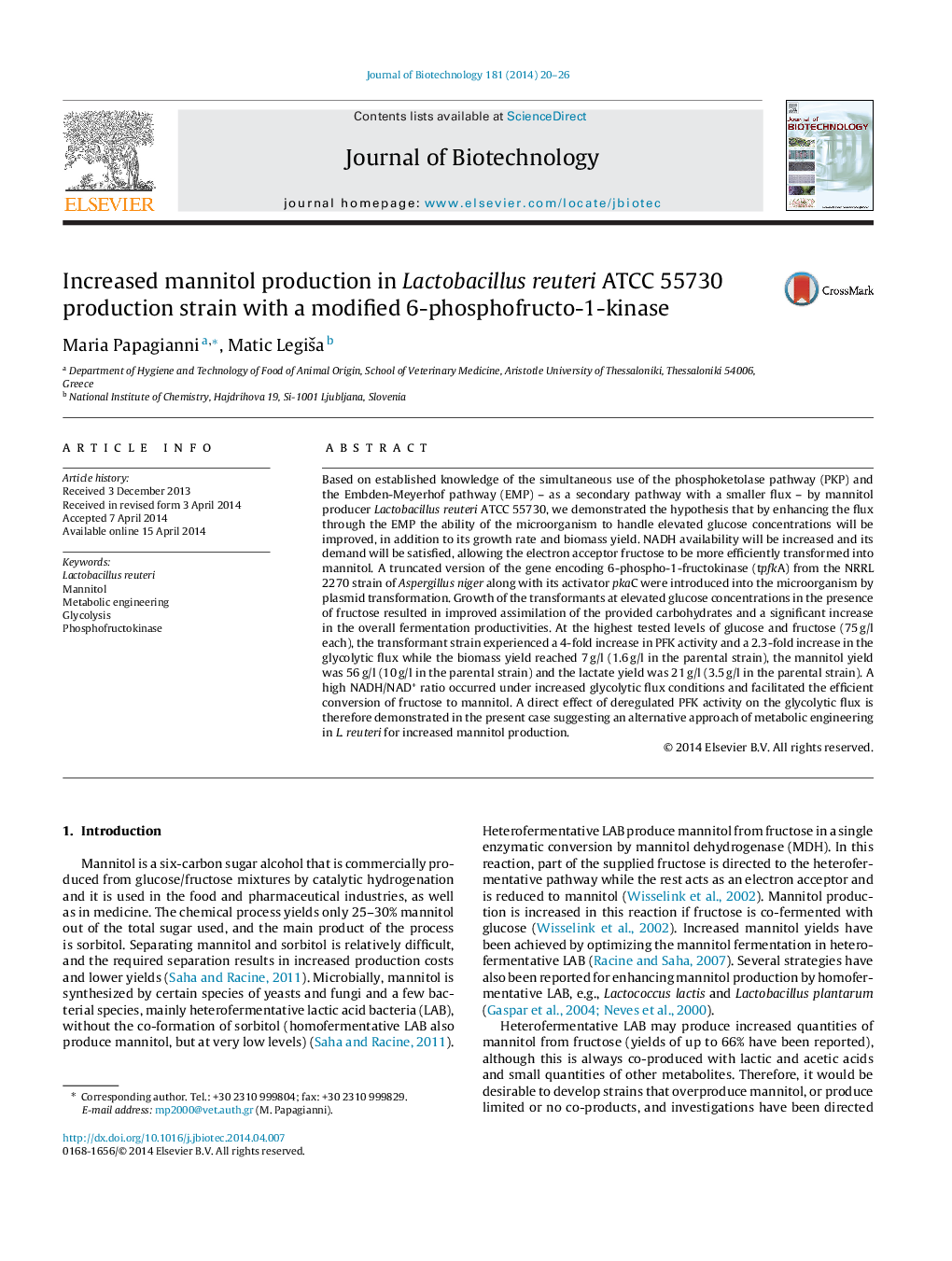| Article ID | Journal | Published Year | Pages | File Type |
|---|---|---|---|---|
| 23051 | Journal of Biotechnology | 2014 | 7 Pages |
•tpfkA and pkaC from Aspergillus niger were introduced into Lactobacillus reuteri.•Transformants cultivated successfully at elevated levels of glucose plus fructose.•Increased glycolytic flux and glucose uptake rates were observed in transformants.•Increased NADH availability satisfied its demand by mannitol dehydrogenase.•Elevated levels of fructose were efficiently converted to mannitol.
Based on established knowledge of the simultaneous use of the phosphoketolase pathway (PKP) and the Embden-Meyerhof pathway (EMP) – as a secondary pathway with a smaller flux – by mannitol producer Lactobacillus reuteri ATCC 55730, we demonstrated the hypothesis that by enhancing the flux through the EMP the ability of the microorganism to handle elevated glucose concentrations will be improved, in addition to its growth rate and biomass yield. NADH availability will be increased and its demand will be satisfied, allowing the electron acceptor fructose to be more efficiently transformed into mannitol. A truncated version of the gene encoding 6-phospho-1-fructokinase (tpfkA) from the NRRL 2270 strain of Aspergillus niger along with its activator pkaC were introduced into the microorganism by plasmid transformation. Growth of the transformants at elevated glucose concentrations in the presence of fructose resulted in improved assimilation of the provided carbohydrates and a significant increase in the overall fermentation productivities. At the highest tested levels of glucose and fructose (75 g/l each), the transformant strain experienced a 4-fold increase in PFK activity and a 2.3-fold increase in the glycolytic flux while the biomass yield reached 7 g/l (1.6 g/l in the parental strain), the mannitol yield was 56 g/l (10 g/l in the parental strain) and the lactate yield was 21 g/l (3.5 g/l in the parental strain). A high NADH/NAD+ ratio occurred under increased glycolytic flux conditions and facilitated the efficient conversion of fructose to mannitol. A direct effect of deregulated PFK activity on the glycolytic flux is therefore demonstrated in the present case suggesting an alternative approach of metabolic engineering in L. reuteri for increased mannitol production.
